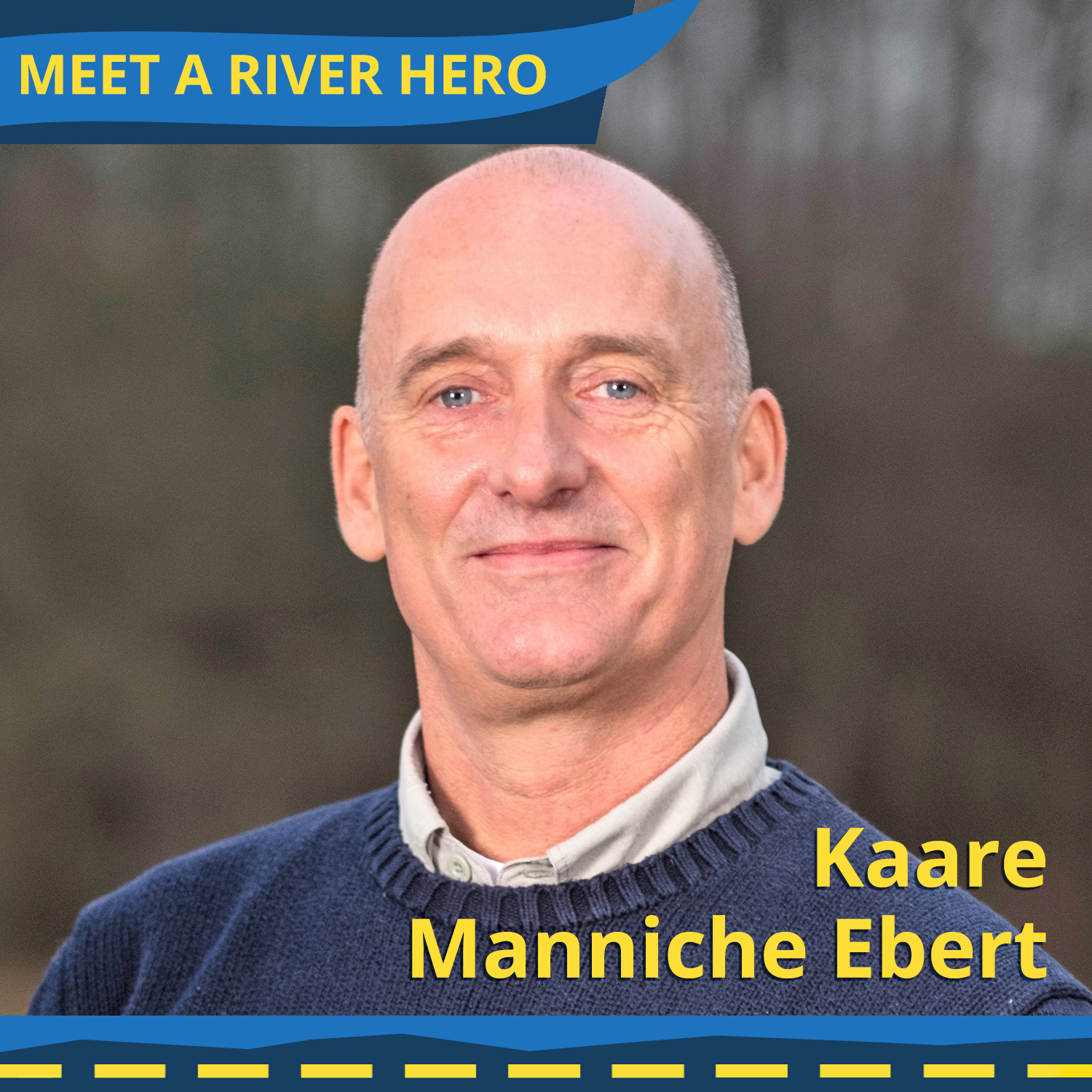Kaare Manniche Ebert is a biologist at the Danish Sportfishing Association (DSA) in Denmark. He is not just any biologist; he is also a River Hero! At the DSA, Kaare focuses on restoring river ecosystems and repopulating Danish rivers with fish. The key method he employs is the removal of obsolete dams that obstruct migratory routes. In this interview, Kaare shares his expertise and insights with us, with the hopes of assisting other river practitioners in achieving successful dam removals.
___________________________________________________________________________________________
What do you do for a living?
[Kaare] I work as a biologist and consultant at the Danish Sportfishing Association (DSA). My primary task is to ensure that there are fish to catch for the Danish anglers. I therefore work both with fisheries management, stocking programs, and habitat improvements. This last task is the one I like the most and gives the best results. Because the wild fish do much better than the stocked ones – and because the basis for large stocks of wild fish is a well-functioning nature.
How did you find out that river barriers can be removed?
[Kaare] In my biology thesis, I wrote about the biology of sea trout – and about the factors that limit the fish’s distribution. As part of the final thesis exam, I had to give a lecture on this topic. One of the most important conclusions in this lecture was that dams are one of the main reasons why the Danish trout population was reduced by 90% in the 1990s. When I started my work in DSA, I had a big focus on helping the volunteer anglers to remove as many blockages as possible.
When did you decide that you also wanted to free rivers? What did you do and where did you go? How did you actually start on dam removal?
[Kaare] Working for free rivers has been part of my job from day one since 1997 because it’s in DSA’s DNA!
Since you started your efforts to remove barriers in your home river, what activities have you been doing?
[Kaare] Since 1997 I have worked for free rivers on a national level. Throughout the period, I have collaborated with volunteer anglers, and together we have been in dialogue with both the local and national authorities in an attempt to remove as many barriers as possible.
I have designed many projects myself, and have advised the volunteers throughout the period. Both in relation to their political work, and in their collaboration with landowners, I have worked to obtain funding for the voluntary work, and I have helped to train more than 500 volunteer anglers in the work of restoring robust streams without barriers.
What is the proudest moment in your efforts to remove a barrier?
[Kaare] It is impossible to say! Our members, in collaboration with DSA, have removed hundreds of barriers over the past 15-20 years. Each and every victory has brought great joy and pride! Right now, we are very close to removing a dam that has been in a Funen stream for more than 500 years. The projected solution involves the restoration of natural hydrology in the watercourse. The battle started in 1997. The day that the barrier falls, I will be proud!
Do you have a take-home message for dam removal project managers and facilitators?
[Kaare] Dialogue goes a long way! But as a general rule, never accept solutions that do not restore the natural flow. Bypass riffles with a restricted water flow do not create free passage!
What advice would you give to future river heroes of the younger generation?
[Kaare] A prerequisite for achieving results is that you familiarize yourself with the material. And together we are strong. Cooperation between NGOs is therefore very important. And then you have to accept that the work is very long-term – the results do not necessarily come immediately. Patience is a virtue – maybe that’s why anglers are so good at achieving results!


